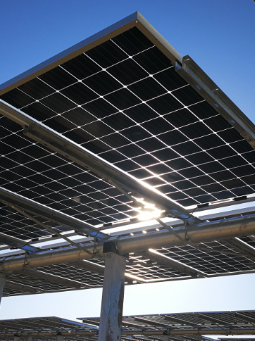AEMO plots quick shift
 The Australian Energy Market Operator (AEMO) says Australia is in the midst of what could be the world’s fastest energy transition.
The Australian Energy Market Operator (AEMO) says Australia is in the midst of what could be the world’s fastest energy transition.
The authority has mapped out a 20-year blueprint that says the shift from coal to a grid dominated by wind, solar and storage will happen smoothly and with significant savings in costs and emissions.
AEMO’s 2020 Integrated System Plan (ISP) identifies the optimal development path for the National Electricity Market (NEM) that will both maximise consumer benefits and deliver $11 billion in net market benefits to 2040.
“This system is now experiencing the biggest and fastest transformational change in the world,” it says.
Under a business-as-usual (do nothing) scenario, AEMO predicts Australia will have a 74 per cent renewable energy system by 2040, but with some extra effort, the nation could be powered by 94.2 per cent renewable sources by 2040.
“The ISP analysis confirms that as our coal plants retire, the least-cost transition of the NEM will be to a highly diverse portfolio consisting of distributed energy resources (DER) and variable renewable energy (VRE), supported by multiple dispatchable resources,” says AEMO’s Managing Director and CEO, Audrey Zibelman.
“To enable the expected rise in renewable energy, the ISP identifies strategic investments in transmission infrastructure and renewable energy zones (REZs), which when coupled with low-cost firming resources, will be the most cost-effective way to add generation capacity and balance variable resources across the NEM.
“In progressing these projects, it is critical that the cost of building transmission lines is tightly managed to ensure consumers derive these benefits,” she said.
The report says there are some essential market and regulatory reforms needed to ensure consumers reap the benefit of the future power system.
“When implemented alongside market and regulatory reforms, the targeted transmission investments identified in the ISP will bring the right resources into the system in a timely fashion. This will create a modern, efficient and resilient energy system that delivers $11 billion in net market benefits weighted across the different ISP scenarios over the next two decades,” Ms Zibelman said.
“The work of the Energy Security Board and market bodies on essential reforms to attract investment and optimise markets for emerging energy resources remains critical to ensure the consumer benefits of the ISP are fully realised,” she added.
The report lays out the NEM’s broad needs as follows:
Distributed energy resources (DER): expected to double or triple, providing 13 to 22 per cent of total underlying annual energy consumption.
Variable renewable energy (VRE): more than 26 gigawatts (GW) of new VRE is needed to replace coal-fired generation, with 63 per cent of coal-fired generation set to retire.
Dispatchable resources: 6-19 GW of new dispatchable resources are needed to back up renewables, in the form of utility-scale pumped hydro, fast responding gas-fired generation, battery storage, demand response and aggregated DER participating as virtual power plants.
Power system services: the growing need to actively manage power system services (voltage control, system strength, frequency control, inertia, ramping and dispatchability.
The transmission grid: strategically placed interconnectors and REZs, coupled with firming resources, to add capacity and balance variable resources across the NEM.








 Print
Print